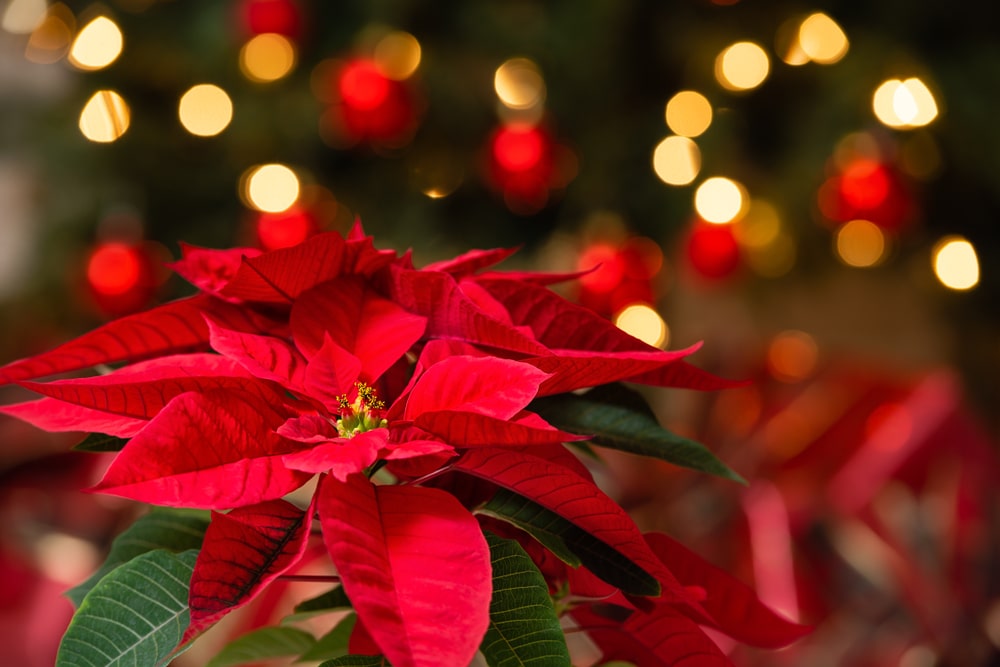The single most popular Holiday plant sold in America is—you guessed it—the poinsettia—with over 40 million sold annually! Chances are you’ve bought one already to decorate your house or been given one as a gift. So here are some things to know:
- Poinsettias are native to southern Mexico. The first U.S. Ambassador to Mexico, Joel Roberts Poinsett, brought them to America. Hence the common name—poinsettia. The botanical name is Euphorbia pulcherrima. It’s related to a succulent houseplant called Crown of Thorns and to another houseplant called Croton—often grown for its gorgeous foliage in yellows and reds.
- The pretty red (or pink, white, or marbled) flowers are NOT the flowers!!! They are brightly colored leaves called bracts. The actual flowers are the tiny little green buds in the middle!
- There is a legend that poinsettias are highly toxic. That is not so. A child would have to eat about 500 poinsettia leaves to be poisoned. That’s not to say, however, that they should eat them. Because they contain latex, they can cause digestive upsets like vomiting, and the sap can cause skin irritations.
- Because they are native to near the equator, poinsettias do not tolerate temperatures much below 50 degrees Fahrenheit. When you buy one, get a sleeve to block cold breezes from it (our poinsettias all come with plastic protective sleeves). And DO NOT stop by the grocery store on the way home.
How to Care for Your Poinsettia
To care for your poinsettia, place it in a bright window, but one with no direct sun in the middle of the day. If the pot is wrapped in foil, poke drainage holes so the plant NEVER stands in water. Water only when the top is dry to the touch, but not so dry the plant begins to wilt.
If you want to try to bloom the plant again next year, it is possible, though challenging. First, remove any foil after Christmas and make sure the plant is in a bright spot. Around March, prune your plant to around 8 inches tall. Prune periodically over the summer to encourage the plant to stay compact. Remember to wear gardening gloves as the sap may cause skin irritation. Feed with a good, balanced houseplant fertilizer, following the label directions.
Summer Care and the “Tricky Part”
You can put it outside for the summer under a tree where it will receive bright but indirect light. Now, here is the tricky part. Around the end of September, the plant MUST have about 14 hours of total uninterrupted darkness every night. Even a street light shining in the window can interrupt this cycle. The plant continues the short day-long night treatment until the top leaves begin to turn color. At that point, you can discontinue the short-day treatment.
Bloom Again or Buy New?
I bloomed a poinsettia again once, years ago. Because poinsettias are relatively inexpensive, I let someone else do all the work and buy and enjoy the plant. Speaking of purchasing this beautiful plant, they’re available now at the Great Big Greenhouse.

